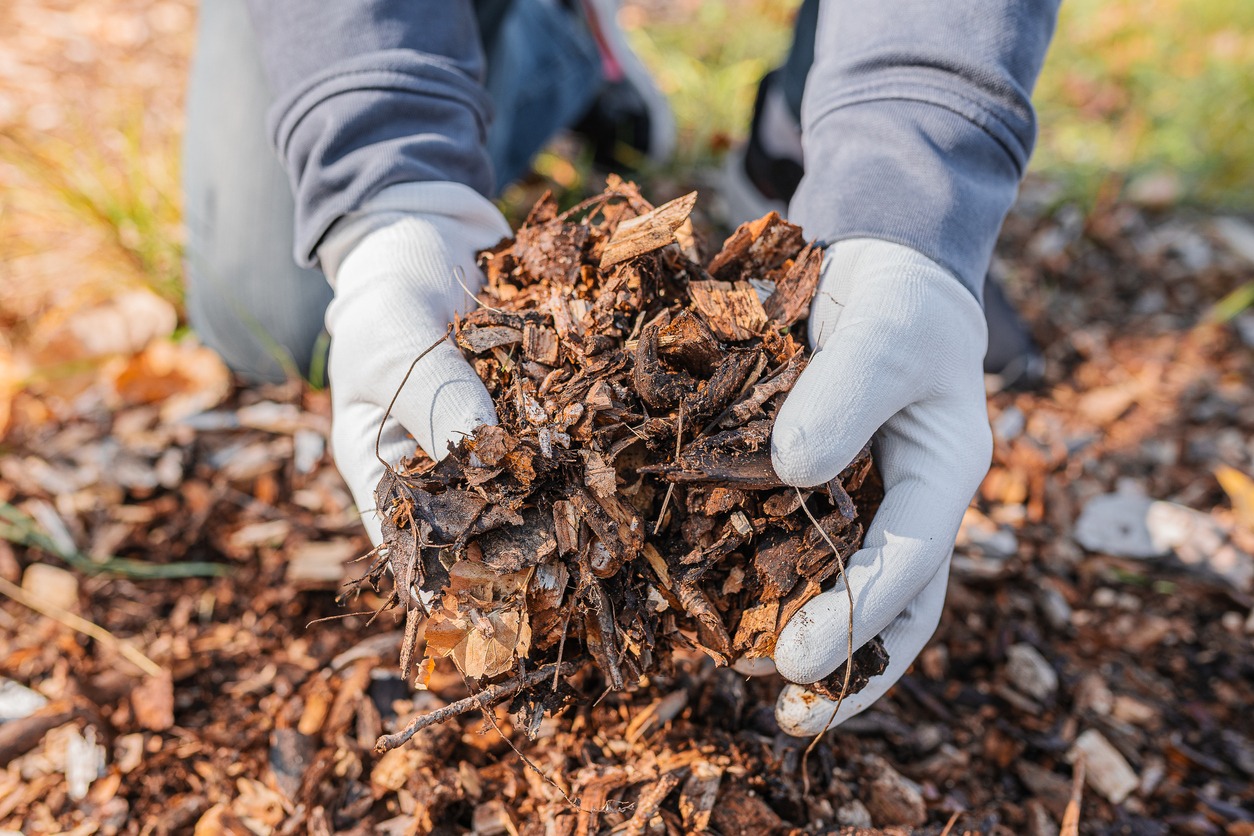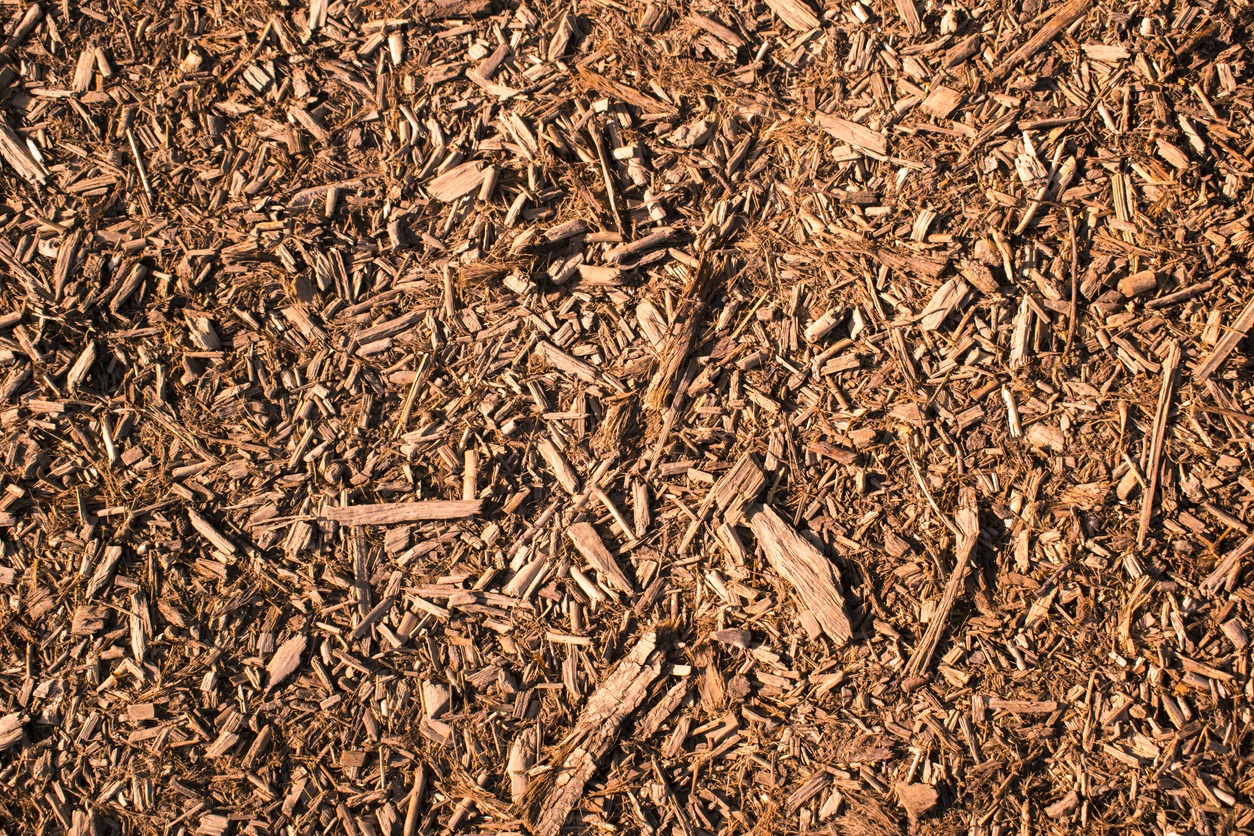Wood chip mulch is the use of wood chips as a layer to cover and protect the surface of the soil for valuable reasons. This could be to add visual appeal and aesthetic view to a landscape, or for technical reasons that are beneficial to plants, such as avoiding erosion, maintaining moisture and soil temperature, and providing nutrients.
Where do these wood chips come from?
Woodchips can come from raw materials like pulpwood, waste, residual wood, and timber processing, with small branches, off-cuts, and other debris being run through a wood chipper. They are small pieces of shredded wood broken into different sizes. These variations in size help plants to be moisturized for a longer time. Wood chips are a good way of recycling waste for valuable and beneficial use.
Types of Wood Chip Mulch
Arborist Chip Mulch
Generally, arborist chip mulch is made up of materials derived from anything that arborists put through their wood chipper. They are essentially a byproduct of a whole tree; trunks, bits of branches, leaves (though not much from the roots), and anything that can be easily chopped down. Arborist chip mulch is beneficial and makes a great top dressing as it is commonly used to suppress weeds from growing, which is a common problem most plant owners face. Arborist wood chips are affordable and can even be requested for free. They are available at landfills, compost sites, and residences where trees have been removed.
Bark Mulch
Bark mulch is an absorbent mulch in a flake form. They are made from shredded tree bark from a variety of sources. Most of it comes directly from the trees and the people who work with them, while other sources are sawmills and furniture manufacturers. Though they are often full of debris and are easily matted, the finer particles look great in the garden.
Modified Wood Chip
Modified Wood Chips are bagged wood chips that have been preserved to reduce their flammability. They can be treated with pesticides and herbicides to prevent weeds and insects from occupying a garden. They can contain both chemical and organic substances. They can be dyed a certain color to show the aesthetic outcome.
Shredded Wood
Crushed wood mulch may be colored, but is usually finely chopped material such as pine shavings. This is typically fine-sized mulch, about an inch or less, which is visually appealing. Commonly a by product of wood and papermaking, it is sprayed to retain moisture and control weeds to create an aesthetic uniformity. However, it has its drawbacks. It may be fine enough to get tangled and may slow down drainage slightly.
Sawdust as Mulch
Sawdust is used as mulch when growing acid-loving plants. Sawdust has a large surface area and decays quickly, which temporarily increases the acidity of the topsoil. Choose a coarse sawdust cut to avoid matting and compaction around perennials and annuals. Unlike larger types of woodchip mulch, sawdust decomposes rapidly and must be renewed annually. Alternatively, sawdust can be used as a natural walkway in the garden. However, do not throw away sawdust from building materials such as plywood. Chemicals in sawdust can seep into the soil and kill plants.
Advantages of Using Different types of wood chip mulch
1. Low-Cost
Although there are other tree-based products used as mulch that is expensive, most types of wood mulch are affordable and some are even free or even your own, especially if you have the materials yourself. They do not necessarily cost a lot of budgeting plan to make a landscape attractive and unique.
2. Uniform Look
The good thing about choosing a specific wood mulch is that they create one overall look for a landscape. They are good to look at because they have that “finished” look, the variety of sizes and colors makes the plants stand out.
3. Suppresses weeds
The primary reason why wood chip mulches are considered in a landscape because most of them suppress the growth of weeds, and even though there might still be weeds growing, they do not have a strong foundation and are easily pull out.
4. Breaks down and moisturizes the soil
Wood mulch is part of trees or woods and logs before being shredded or chipped, they will eventually break down as they are organic materials. They provide moisture and nutrients through the soil which are helpful for plants’ growth.
5. They are a good use of waste
Shredded or chipped wood is a waste of resources. Using their use in landscaping is a way to reduce them and put them to good use.
Disadvantages of Using different types of Wood Chip Mulch
1. Easily Blown Away
Since wood chip mulch can also include lightweight materials; they are often an issue during windy days especially if they are not held down. They only serve as a visual representation of shambles.
2. Can cause fire
Raw wood chips can burn plants and may cause a fire.
3. Decomposes quickly
Some wood chip types decompose quickly, especially small-sized ones. Because of this, they require frequent replenishment.
4. Treated with pesticides
Pesticides are common materials present in wood mulches which are harmful to plants and could even be poisonous to animals.
5. Can look plain
Although wood chips can bring aesthetic and simple vibes, they can sometimes look boring. They need other designs to stand out.
Final Thoughts
There are a lot of things to consider when one wants to try mulch for landscaping. One must prioritize the benefits of it to plants and not just its affordability and appearance.


